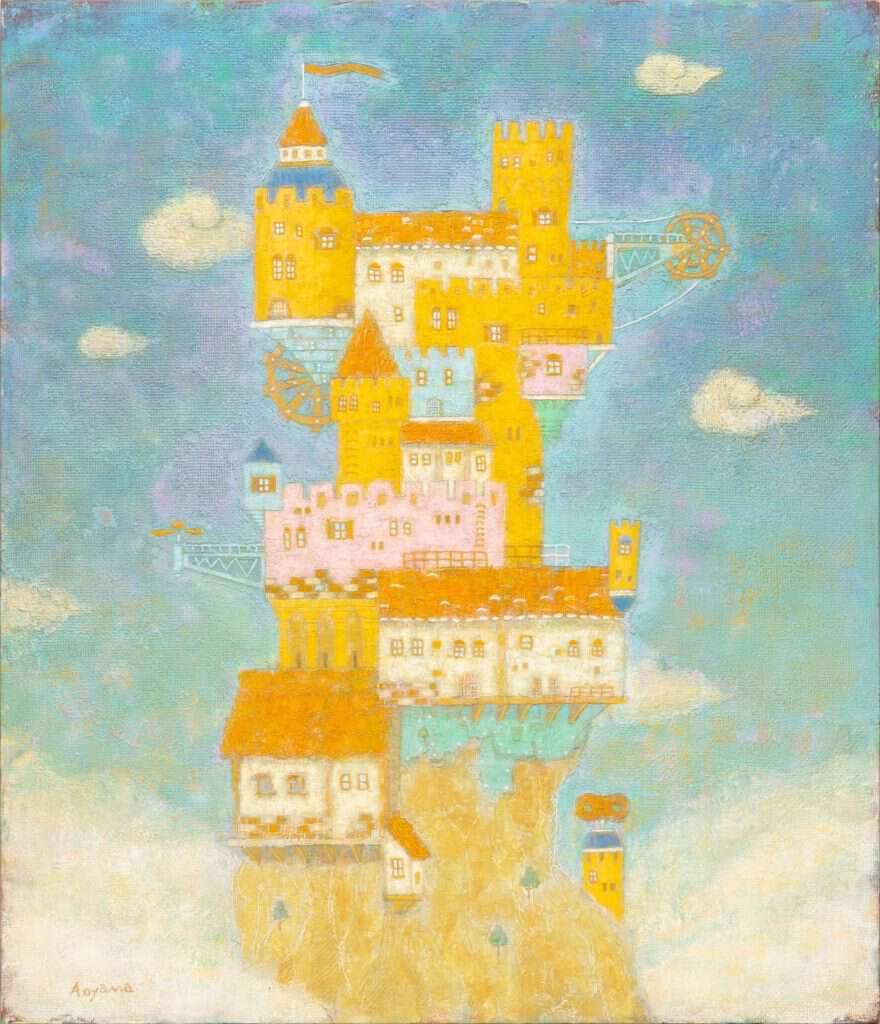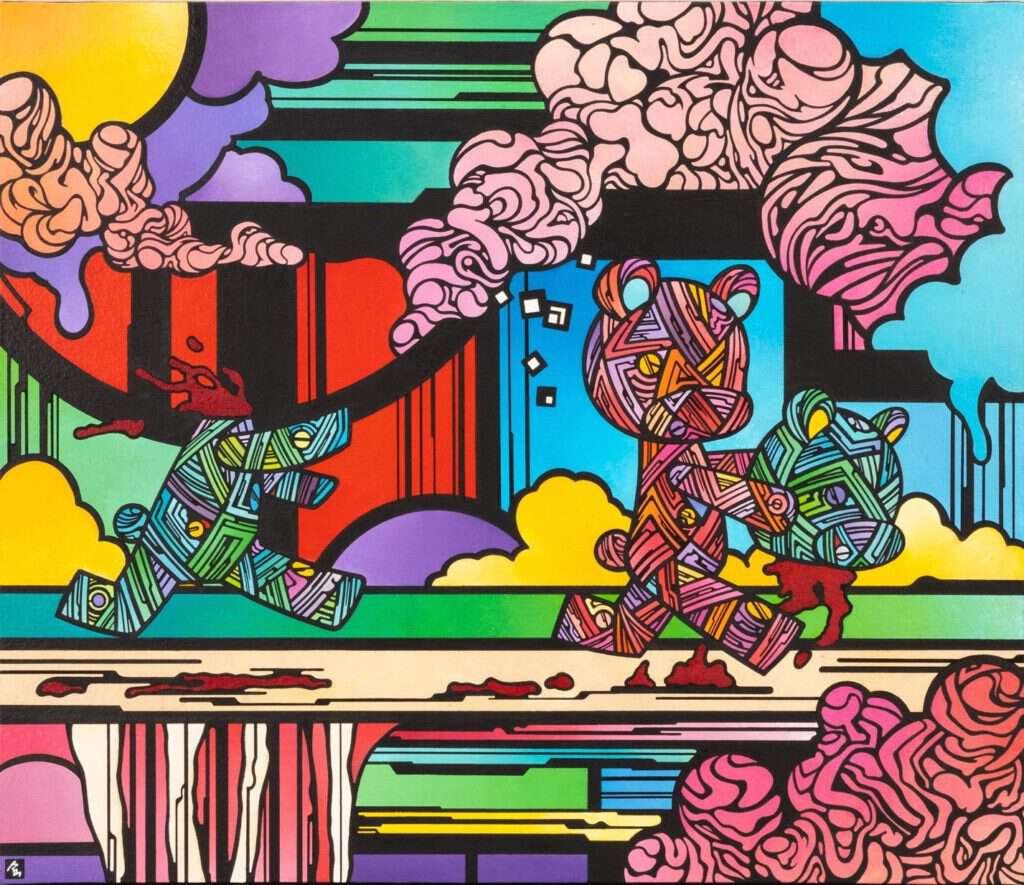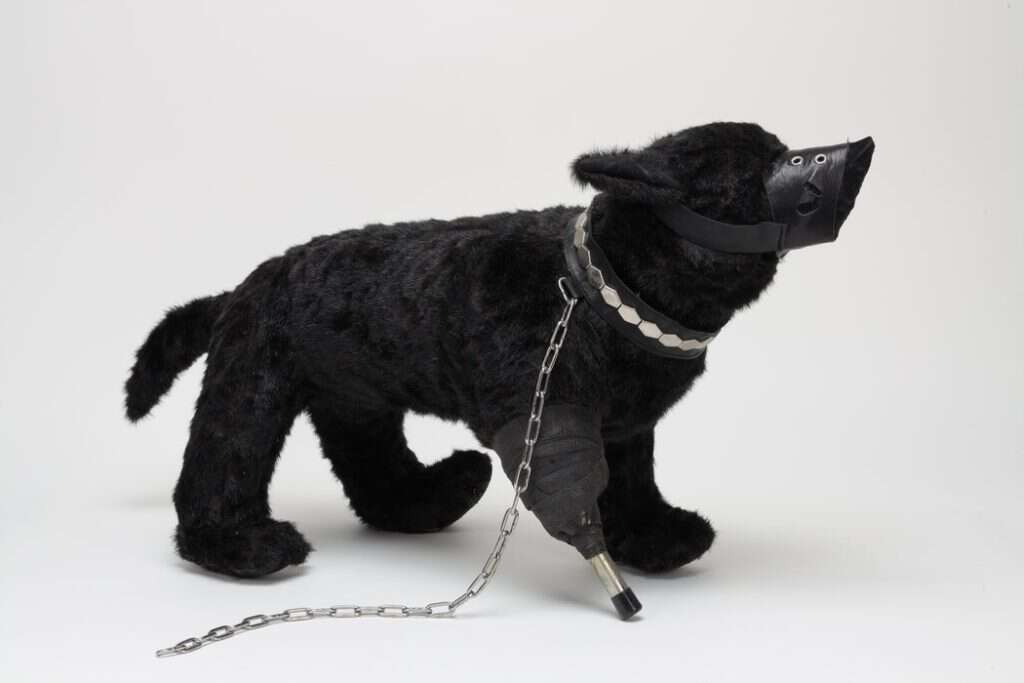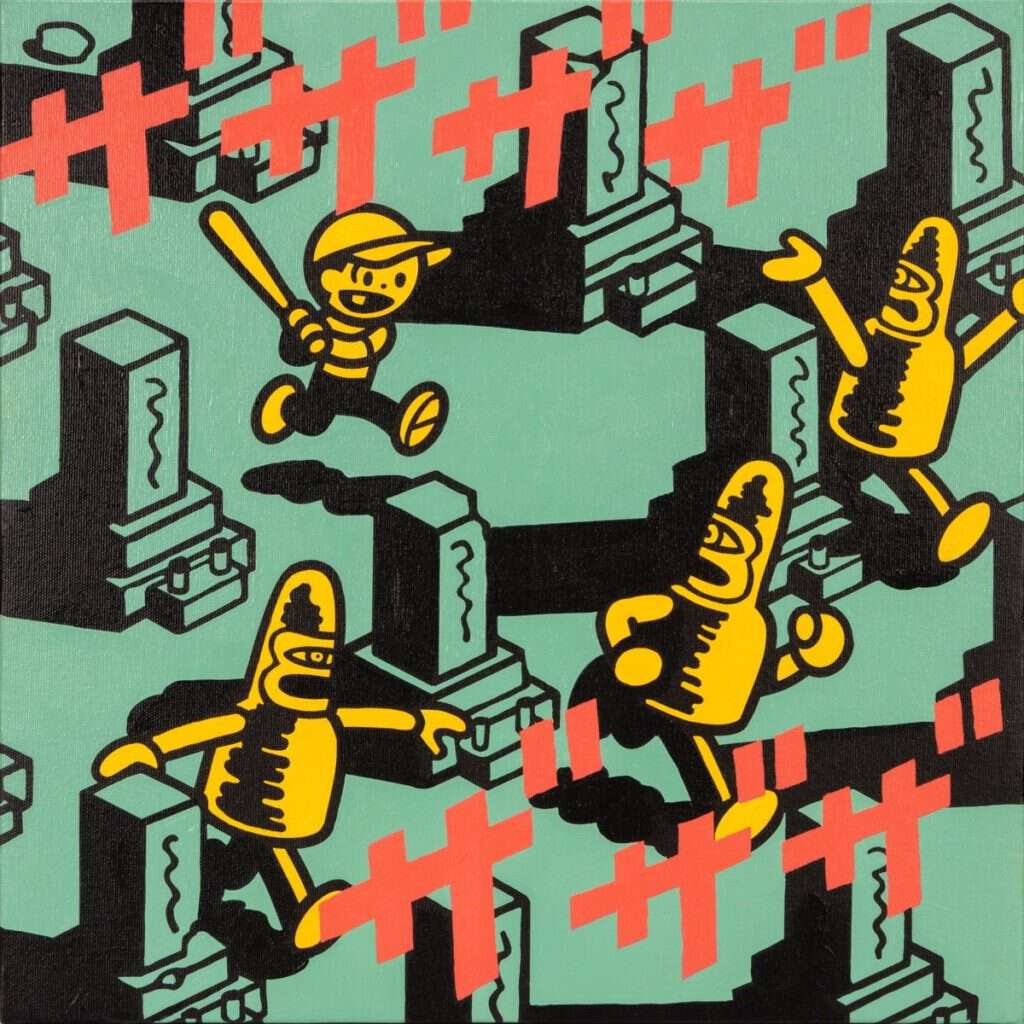C-DEPOT is an artist group formed by young Japanese artists of the same generation born around the 70s and 80s. We create works in a variety of genres including painting, three-dimensional works, media, video, and music. In an effort to expand the group, they continue to discover other talented young artists. Yuji Kanemaru, one of the founders of C-DEPOT, describes his experience in starting the group. For the past seventeen years he has been involved in running the group and keeping it active. He talks about the challenges, the successes, the various projects, and the future of C-DEPOT.
Contents
Starting C-DEPOT
Q: When you started C-DEPOT, were there any other artist groups that you were familiar with?
A: I saw a few people working in artist groups, but I don't think there have always been large groups like C-DEPOT. if there had been a group like C-DEPOT, I would have joined it...
Q: How successful do you think your group has been?
A: In 2002, the Internet was just starting to become popular, and I saw this as a new opportunity. However, when it came time to start a new movement using the Internet, technical problems arose and it was difficult to put it into action. So we decided to make exhibitions our main focus.
Q: How has C-DEPOT changed in the first five years?
A: Up until 2012, we held exhibitions alternately every year at the Yokohama Red Brick Warehouse and at Spiral in Omotesando, Tokyo. 2012 was the tenth year since we started the group, and I didn't think there would be any more opportunities for us to continue holding exhibitions once a year, so we decided to end it once and for all. The last exhibition was held at the same time at both venues. During this time, we increased our numbers, booked both venues, and set off fireworks at the end. After that, we shifted our focus to collaborating with companies and getting closer to them. Instead of organizing exhibitions as we liked, we started to receive requests. As we made requests in this way, we began to receive more support from companies. However, even though we had financial support from companies, it was not enough to cover the cost of the exhibitions. Eventually, it was decided that the artists would bear the costs of the exhibition. If possible, we would like to do the show at a nice venue where the artists do not have to bear the expenses.
Members of C-DEPOT

Q: It's interesting that you invite artists from various genres.
A: Yes, it is. I studied in the design department of Tokyo National University of Fine Arts and Music. This design department was not a unified department, but rather a mini-university, and was often referred to as a mini-geidai. It is common for universities to have various departments, but the design department at Tokyo Geidai was ridiculed for having students who were active in various media. Some people said that the Department of Design was not a design department. When I was a high school student, I saw the graduation exhibition at the art university and thought that this department was the most interesting and I wanted to study there. I think the idea of "C-DEPOT", a group of artists from various genres, was inspired by the fact that this department accepted a variety of media.
 A castle in the sky 3 by Kenichi Aoyama
A castle in the sky 3 by Kenichi Aoyama
Q: How do the members influence each other in the group?
A: When you work in a group, there is a sense of competition. For example, members may be concerned about what other members are working on next, and may want to create a larger piece than their own. This competitive spirit can motivate, create synergy, and encourage members to continue creating their work. They may also feel a connection with other artists and collaborate on new works. I think we influence each other in a positive way.
 head hunt by Hiroki Kanayama
head hunt by Hiroki Kanayama
Q: What are some of the challenges of running a group?
A: I think it's hard to run a big event with a small group of people. A: I think it's hard to organize a big event with a small number of people, but it's also hard to keep the group going. While keeping the group going, you have to be careful not to get monotonous or stuck in a rut. As the years go by, the members' thoughts and ideas may change, and that can be difficult. While our artistic skills mature over time, there are also areas where they decline. I feel that I have experienced the difficulties of keeping a group going for many years. 15 years have passed since I started C-DEPOT, and I am always thinking about how to maintain motivation and how to create an environment where members can refresh themselves and stay active.
Q: What appeals to you about the artists who participate in C-DEPOT?
A: Each member has his or her own art form, and they hone their skills within that form, but if they concentrate only on one art form, the artists' horizons become very narrow. At times like this, looking at other genres of art, thinking differently, and being moved by other forms of beauty, allows you to look at yourself and your work objectively. You can notice things like, "I have this way of thinking," or "I think this is also beautiful. Even if our values are different, even if our languages are different, we can understand each other because we are artists. It's fun to be able to connect with other artists on a fundamental level.
Exhibition Experience
Q: By 2012, what kind of audience did you have?
A: We have chosen two popular venues that attract a lot of people. Of course we advertised our own exhibition, but both Yokohama Red Brick Warehouse and Spiral are places where people will come. Spiral, in particular, is an art complex with a café, so I think people who are aware of new movements and trends came to see the exhibition. We also advertised in art magazines, so we were able to appeal to people in the art world as well. Also, members of the group personally sent emails to people they knew.
Q: What was the most impressive aspect of the exhibition?
A: I received offers for projects, interviews, and was featured on TV.
These little things happened, and looking back now, I can see that our exhibition was networking and spreading the word about our group. Because of our activities as a groundwork, they trusted us and now give us the opportunity to be commissioned.
Change of Direction

Q: What about after 2012?
A: We wanted to sell our artworks, so we announced that we would exhibit them with price tags to encourage people to buy them. Along with that, I would like to have an art fair with a focus on artists. We had envisioned an art fair on the scale of Design Festa or GEISAI, but we were unable to make it happen. Instead, in 2014 we held a large-scale exhibition on the 8th floor of the Shibuya Seibu Department Store, and it was only after 2012 that our past efforts came together and we started collaborating with large corporations like the Shibuya Seibu Department Store to hold exhibitions that we finally started to see results.
From then on, I began to receive various requests. For example, when the Royal Park Hotel, which is directly connected to Haneda Airport, was built, we asked C-DEPOT to do the art decorations for each room. C-DEPOT members worked together to create the art decorations for the suites and the large paintings in the lobby. The painting in the lobby is there permanently and can still be seen today. The nature of the hotel and its many constraints was a great learning experience for us.
On the other hand, when we were working with another company, Park Hotel Tokyo in Shiodome, we had a lot more freedom in what we wanted to do, and we did four exhibitions a year, each lasting two to three weeks. four exhibitions a year, each lasting two to three weeks. The theme of the hotel was "The Beauty of Japan", so we had exhibitions based on the four seasons of Japan.
 After the War Dog by Wondimensiontoys
After the War Dog by Wondimensiontoys
Also in 2011, I spent a year working on the interior of RANDY, a café in Roppongi, changing the theme of the work every two months and having a solo exhibition of the artists. We had a lot of freedom and displayed the works with price tags for people to purchase. It was interesting to see how the café customers became interested in what we were going to exhibit next. Unfortunately, this cafe closed in 2018.
Since 2013, I have been participating in the "New Ikebukuro Montparnasse West Exit Exhibition," an art event held at the west exit of the station with the aim of attracting people to Toshima-ku. This area, known as Ikebukuro Montparnasse, is where the C-DEPOT office is located. From the end of the Taisho era (1912-1926) to the end of the war, young artists such as the painter Moriichi Kumagai and the novelist Rampo Edogawa gathered here to engage in artistic activities. This event is an attempt to bring this cultural history to light through art. This event has been going on for 13 years, and C-DEPOT has been involved in special projects.
For example, one exhibition had the theme of kokeshi dolls. Yajiro, a kokeshi doll craftsman from Miyagi Prefecture, made kokeshi dolls out of wood and the artist drew pictures on them, which was intended to deepen the exchange between Miyagi Prefecture and Toshima City. The purpose of the event was to deepen the exchange between Miyagi Prefecture and Toshima City, and the proceeds from the sale of the kokeshi dolls were donated to support the recovery from the Great East Japan Earthquake. In addition, various artworks were set up throughout the city.

Art flags have been placed in city parks, fire stations, and in the windows of securities companies.
We have also received requests for various other jobs such as art decorations for company offices. Although we do not make a profit from these activities, we feel that the situation surrounding us is changing. Companies need art, and lately companies are looking for art to differentiate their business and events, which I think is a very good thing. Customers come to C-DEPOT with the expectation that we can create a variety of artworks and that we can help them in some way. As our name recognition gradually increased, we began to receive requests without a break in between projects. I have always been looking for ways to present my work overseas, and I am grateful for the opportunity to participate in TRiCERA.
In the first five years, we had just started our group and were not socially recognized, so we took many risks and experimented in many ways. Many of our members are now in their 30s and 40s. I think that all of our efforts have paid off and each artist and the group as a whole has really grown. Of course, we still have problems, but I think it is because of our experience that we are able to avoid problems and solve them.
Concept of the Group
Q: Has the concept of "community-based artist group" changed?
A: No, the concept has not changed. Rather, I think the concept is becoming a reality. However, there is the issue of "wanting more". Our members want a better stage or want to see better results, so we are always thinking about what the next step should be.
Q: By "community-based artist group," do you mean implementing art in the city or holding art events?
A: I think it is important to aim to have art everywhere in our daily lives. It would be nice to have art in the places we go on a daily basis. Also, since we are a group of artists, we are always thinking about how we can create an environment where artists can continue to create their works, and we try to make that happen.
In the case of a painter like me, it is because my predecessors paved the way for me that I have been able to become a professional painter, earn a living, and create my own path. However, it's a different story for artists who are creating new genres such as media art and three-dimensional art. That is why I would like to create opportunities for artists to make a living by continuing to create their works. I think that is very important, and I want C-DEPOT to be a place where such opportunities can be created.

Leg strength by corsica
For this reason, we are of course focusing on increasing sales of our artworks, but we also believe that providing art can take many forms, such as providing performances and offering art for various events. Therefore, I would like to create ties with the community by planning various projects that match the artists' specialties.
Recently, we have been receiving a lot of requests to conduct workshops for children. I feel that more and more parents want their children to experience cultural education.
Even my wife is looking for these kinds of workshops to take our children to. Rather than attending traditional painting classes, they seem to be fascinated by unique genres of art.
In cooperation with Toshima Ward, C-DEPOT holds a five-day workshop every summer vacation. I think art education for children is very important, so I started thinking about what I could do to contribute to it. Our workshops are very popular and many people sign up for them even without advertising. We have found that the demand for such workshops is very high.
Looking to the Future
Q: What is your vision for the future?
A: C-DEPOT is modeled after the Vienna Secession. At the Vienna Secession, there was a building called the Secession Building, where we held exhibitions. I'm hoping to create a large art center where members can get together and do various activities.
Q: What are your expectations for TRiCERA?
A: We want to provide high quality art, and if we get results, I think we will have more members who are willing to be more active. Of the many members we have, only about half are continuously active. I hope that people who have a track record but are not currently active will join us and feel that they are benefiting from our efforts. For this reason, I think that activities for overseas are very attractive.
More The Art of C-DEPOT
(A-Z)
Aran Yasuoka
Asuka Tsutsumi
Corsica
Daisuke Yatsuda
Aran Yasuoka
Aran Yasuoka
Hiroki Kanayama
Kenichi Aoyama
Riyo
Takashi Inada
Takehiko Tsutsumi
Tomoichi Fujita
wondimensiontoys
Yoshiko Hosoi
Yu Uchida
Yukari Suematsu